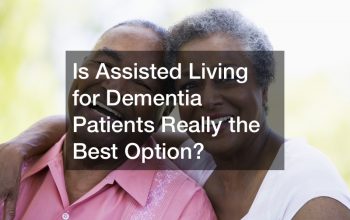What Is An Assisted Living Facility And How Does It Help Elderly Populations?


There are a lot of misconceptions about assisted living in the United States. Mainstream media regularly invokes images of drab and gray living quarters filled to the brim with detached staff, unhappy residents and bland food. The truth, however, is far different. Assisted living is a necessary and supportive resource for elderly and disabled populations, providing them with around-the-clock care they would have a difficult time receiving anywhere else. From assisted living apartments to medical assisted living facilities, there is a suitable option out there no matter the needs of the individual. Let’s take a look.
What Are Common Illnesses In America?
There are many different illnesses and disabilities facing elderly populations in the United States today, ranging from chronic back pain to chronic illness. One of the most debilitating is Alzheimer’s disease — this has been found to be the only top 10 cause of death in America that cannot be prevented, slowed or cured by modern medicine. Almost two-thirds of Alzheimer’s patients are elderly women and one in three seniors will pass away due to some form of dementia. The side-effect of Alzheimer’s are well-known and continue to be studied by doctors across the country.
What Are The Side-Effects Of Alzheimer’s?
The most notable side-effect of Alzheimer’s is its progressive damage on memory and day-to-day mundane functions. Brain cells degenerate and eventually die at a steady rate, with no known cure existing as we know it. However, consistent care and supervision has been known to still encourage a high quality of life in residents suffering from the condition. Assisted living facilities regularly encourage memory activities and healthy, feasible physical activities so residents with Alzheimer’s can still lead a comfortable life.
What Is An Assisted Living Facility?
Also known as retirement homes and memory care facilities, assisted living helps individuals struggling with illness or Alzheimer’s live a comfortable life. Assisted living facilities generally provide or coordinate 24-hour supervision — this includes, but is not limited to, three meals per day, personal care services, health care services, transportation arrangements, laundry services, housekeeping and day-to-day activities. A survey showed four out of 10 assisted living residents receiving assistance with three or more activities of daily living, with bathing and dressing being the most common.
How Many People Use Assisted Living?
Millions of Americans live their day-to-day life comfortably in assisted living facilities. Studies have shown nearly 75% of assisted living residents being female, with 26% or so being male. More than three-fourths of assisted living residents have had at least two out of the 10 most common conditions, which include high blood pressure and dementia. If someone you know is suffering from encroaching Alzheimer’s or is simply starting to get older, consider seeking out your local assisted living facility or memory care assisted living residence.
Why Use Assisted Living?
Assisted living facilities are a useful, all-encompassing resource for people across the country. A study by Genworth Financial saw more than half of all respondents admitting their greatest fear regarding illness or age was becoming a burden on their family and friends. In fact, this was considered an even greater burden than dying. Assisted living facilities provide regular healthcare and day-to-day services on top of group activities like yoga and reading, all the better to create a consistent quality of life while reducing strain on both the individual in question and their family. Assisted living isn’t a trap or cage — it’s yet another step on the road of life.
